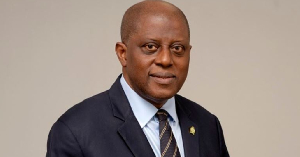David O. Sogbodjor, former Finance Manager of the defunct Beige Bank has told the High Court trying the former Chief Executive Officer (CEO) that the receiver during the collapse of the Bank did not engage the institution’s financial team.
He said although the finance team of the defunct bank, including the CFO worked briefly with the receiver, he failed to consult them on a lot of information concerning the bank’s financial affairs before presenting the reports he had compiled in respect of the affairs of the bank, which reports were now before the court.
“If the receiver had engaged us on these matters, we would have provided the necessary information to enable him to rectify the information he provided in exhibits 1 and A.”
Sogbodjor, the second defense’s witness, was giving his evidence-in-chief.
He said when the Bank was placed under receivership, he worked with the team represented by Julius Ayivor, main prosecution’s witness in 2018, at the time when Consolidated Bank, Ghana, had taken over the business about three months prior.
Sogbodjor said between 2009 and 2012, the Bank, before it was upgraded to Savings and Loans from Beige Capital, grew from a branch to almost 30 branches from Accra to Ashanti and Central Regions.
He said part of the exhibits in the receiver’s report before the Court provided information to the BoG and the Attorney-General on the financial and accounting position of the Bank at the time of receivership.
Thaddeus Sory, the accused person’s lawyer, informed me that Ayivor started testifying in court sometime in February 2023.
By this time, it was almost five years after the Bank was placed under the auspices of the receiver.
“Exhibits 1 and A were prepared based on information available to the receiver on the Bank’s accounting system, such information, however, does not reflect the true and final financial and accounting position of the Bank.
“The reason is that such information is not accepted in accounting as the final and true statement of an institution’s financial and accounting position,” he said.
“Business institutions are continuously in business, in their businesses, transactions are initiated, and some of the transactions are either completed immediately or subsequently.
“Transactions completed immediately would usually be recorded but depending on the nature of such transactions their exact financial effect may not be immediately reflected in the financial and accounting records of the institution until later when other events relating to these transactions have occurred,” he added.
He continued that “In financial accounting, it is common practice for institutions to be allowed a period of between thirty (30) to ninety [90] days after the end of an accounting year to prepare the financial reports of that specific year.”
He said that was to allow for the reports to take account of all adjusting items that may exist as of the balance sheet date and for the financial reports to reflect the true and exact situation of the reporting entity as of that balance sheet date.
“With regard to exhibits 1 and A, however, I observed after reading them that the receiver retained and maintained the same information given to him from the team when he took over the Bank as a receiver and up until almost five years later when Ayivor started testifying, saying the reports omitted a lot of information he provided to the receiver.
“This is wrong, I, therefore, say that exhibits 1 and A are not accurate and do not reflect the true accounting position of the Bank. The receiver appears to appreciate the fact that exhibits 1 and A cannot be final when he admits on page 17 of exhibit 1 that: there were significant number of assets physically present at the various branches that had records.”
Sogbodjor said, “There is also another statement made by the receiver that he had obtained two asset schedules, one from the finance department and another from the administrative departments, and that these two asset schedules were not in agreement.
“It is important to add that the receiver did not say that he took account of them in exhibit 1 although these assets were not recorded in the asset register.”
On the Bank’s asset register, the witness said the compilation of the Bank’s assets register was the responsibility of the Bank’s finance department.
“The process starts with the extraction of the costs of the assets and their locations as have been posted in their respective ledger codes in the general ledger. This is then updated into a file named the asset register.”
He explained that the general ledger and the exact register were, therefore, two different, separate and distinct accounting records of the Bank as was the case with many other institutions.
He said the asset register was normally generated in Microsoft Excel but took its source from data in the general ledger.
He said the report also did not cover all the Bank’s assets, adding that in August 2018, there were several assets [furniture and fittings, computers, power generators, etc) that had been acquired by the Bank, distributed to various offices.
Disbursements, he said, made by the Bank in respect of those acquisitions were all recorded in a ledger called prepayment project works, but the finance office was yet to pass journals that would re-allocate the costs of the items so received into their appropriate general ledger codes. ‘
Michael Nyinaku, former CEO of the defunct Beige Bank is facing theft and money laundering charges, which he has denied.
Business News of Thursday, 25 April 2024
Source: GNA
Beige Bank trial: Receiver did not engage financial department before collapsing bank
Entertainment












